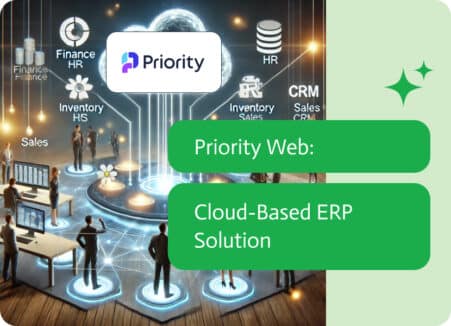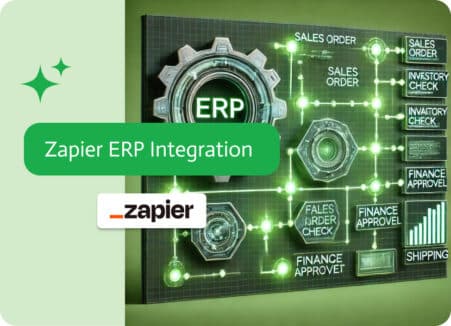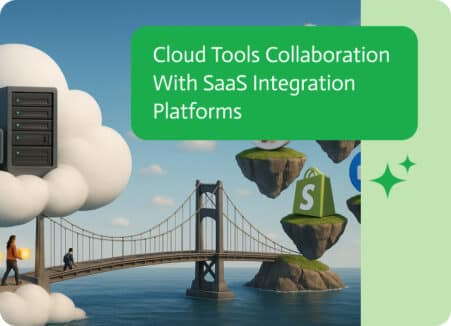

iPaaS Benefits: Why Your Business Needs It
Integration-Platform-as-a-Service (iPaaS) is the cloud-hosted glue that snaps SaaS apps, on-prem systems, files, APIs, streams, you-name-it into a single, well-behaved ecosystem, no custom spaghetti code required.
What Is iPaas?
Let’s get one thing straight: iPaaS isn’t just about “moving integrations to the cloud.” That phrase sounds like something an overworked sales deck cooked up at 2 a.m. What iPaaS really does is give your entire organization the power to wrangle data flows and glue systems together without the mishmash of late-night code pushes or tribal knowledge locked in someone’s head.
In other words, iPaaS turns your integration mess into a repeatable, scalable, user-friendly superpower. Not a one-off project. Not a fragile pipeline. A capability. The kind that grows with your business, evolves with your tech stack, and doesn’t implode the moment you acquire a new CRM or hop on the AI train.
Integration Without the Meltdowns
Traditionally, integration meant custom code. Lots of it. Point-to-point scripts. Middleware that required its own priesthood. And that one guy in IT who knew where the cron jobs were buried.
iPaaS flips that on its head. Instead of treating integration like a project (with a start, end, and inevitable failure a few quarters later), it treats it like a service, always on, always flexible, always growing with you.
Did you buy a new SaaS tool? No problem. Launch a digital initiative? Easy. Merge with another company? Just another Tuesday. The integrations aren’t redone from scratch—they’re extended, remixed, and reused.
And that’s why teams using iPaaS tend to report:
- Faster project timelines (less waiting around for devs to write brittle glue code),
- Cleaner data (because it’s all synced properly),
- Happier developers (who are finally freed from babysitting integrations),
- And yep, lower total cost of ownership, because you’re not paying for the same plumbing every quarter.
Okay, But What Should You Look For in an iPaaS?
Brilliant question. Not all iPaaS platforms are created equal, some are polished and powerful, while others are cobbled-together GUI wrappers on top of legacy pipes. So before you swipe right on a vendor, make sure they’ve got these four must-haves:
Connector Coverage That Actually Covers You
This one seems obvious, but it’s where a lot of vendors drop the ball. You don’t just need “hundreds of connectors.” You need the right connectors—prebuilt, robust, and ready for the specific tools your org lives and breathes.
We’re talking:
- Your CRM (Salesforce, HubSpot, or whichever logo your sales team swears by),
- Your ERP (SAP, Oracle, or the lesser-known flavor your CFO refuses to part with),
- Your cloud storage, analytics tools, help desks, marketing automation tools, and even that quirky legacy tool that’s somehow still mission-critical.
The more prebuilt integrations available out of the box, the faster you move—and the fewer 3rd-party contractors you’ll need to bring in just to build a custom adapter.
Security & Compliance Credentials
iPaaS lives at the center of your data universe. It touches customer records, financial info, employee data, the works. So it had better be locked down tighter than your CEO’s Wi-Fi password.
Look for the following certifications as non-negotiable:
- SOC 2 for security controls,
- HIPAA if you’re in healthcare (or just want to play it safe),
- GDPR if you’re touching any EU resident’s data (which is basically always, thanks to global platforms).
You also want to make sure the platform supports:
- Role-based access control (so not everyone can break everything),
- Audit logging (so you know who changed what and when),
- Encryption in transit and at rest (because duh).
A User Interface That Doesn’t Scare Business People
This might sound fluffy, but it’s a big deal. One of iPaaS’s biggest strengths is how it enables non-developers. Think operations, marketing, and support, to build and maintain integrations without needing to wait three sprints for engineering.
For that to work, the platform needs:
- A clean, visual builder,
- Drag-and-drop flow creation,
- Conditional logic without coding,
- Error handling that doesn’t look like a Matrix screen.
When you give the business team the ability to wire up a lead routing flow or sync survey results to the CRM on their own, you free up your engineers to work on stuff that actually moves the product forward. You also reduce the number of tickets clogging up your backlog.
It’s not about replacing developers. It’s about empowering everyone else to stop clogging the dev queue.
Transparent Pricing Without the Fine Print Ambush
Finally, let’s talk money. Some iPaaS vendors are upfront and fair. Others lure you in with teaser rates and then hit you with surprise fees when you go over some obscure data volume or connection limit.
Before you sign anything, check:
- How they bill: Per flow? Per volume? Per connector? All of the above?
- What’s included: Are key features like error retries, versioning, or custom connectors part of the base plan, or are they add-ons?
- How scalability affects pricing: Will your costs double just because you added one new SaaS app?
The best platforms are modular, flexible, and clear. They scale with your needs but don’t punish you for being successful.
iPaaS Isn’t Optional, Growth Is Essential
If your company is still building integrations the old-fashioned way, through one-off code, brittle ETL jobs, or silent prayers, you’re not just wasting time. You’re building a house of cards.
Modern businesses move fast, apps come and go, and data volume explodes. Departments launch shadow IT, while M&A deals force tech stack mashups.
You need integration infrastructure that isn’t fragile, bespoke, or slow. You need something repeatable, governable, and adaptable, something that doesn’t break the minute you swap tools or change strategy.
That’s what iPaaS offers.
It’s not just about connecting software. It’s about giving your teams the ability to work smarter, not harder, no matter what the next quarter throws your way.
So go ahead: Audit your integration setup. Ask your ops team what they wish they could automate. Ask your devs how much time they spend fixing old flows. Then take iPaaS for a spin, with the right checklist in hand.
Because at the end of the day, automation should free your teams, not frustrate them.
A Quick Look:
| Advantage | Why It’s a Game-Changer |
| Instant App Hookups | iPaaS comes loaded with ready-made connectors and drag-and-drop tools, letting you link systems like Salesforce and SAP—or sync TikTok campaigns to your data lake—faster than you can microwave lunch. |
| Unified Control Center | One dashboard to design, manage, and debug every integration flow keeps data issues from turning into late-night firefights. You see everything, fix anything, without guesswork. |
| Live Sync & Automation | As soon as a change happens—an order, a ticket, a customer profile—iPaaS keeps all systems in sync in real-time. Dashboards stay current, and processes react instantly. |
| APIs Included (No DIY Needed) | Most platforms bake in tools for API lifecycle management—authentication, throttling, versioning, developer access—so you’re not stuck building an API gateway from scratch. |
| Security Without the Slog | Encryption, access control, compliance, and audit logs are handled by the platform. Your team stays focused on workflows, not patching holes. |
| Lean, Mean Integration Machine | Cloud-based pricing and no-code functionality slash the time and cost of building connections. No more endless scripting or outside consultants on speed dial. |
| Built to Scale Effortlessly | Whether you’re handling regular traffic or a flash sale frenzy, cloud-native infrastructure flexes automatically. No hardware upgrades, no license drama. |
| Empowers Business Users Too | With visual tools and templates, non-tech teammates can create workflows on their own, while IT keeps everything secure and under control. |
| Rapid Deployment for New Projects | Built-in templates and ready-to-use components let you spin up integrations for SaaS, M&A, or AI initiatives in days, not fiscal quarters. |
| Change-Friendly Architecture | Need to swap CRMs or adopt a new analytics tool? iPaaS abstracts integrations so your old workflows won’t crumble. App-switching becomes seamless, not scary. |
Why Pick Noca for Your iPaaS Needs
Noca is made just for integration tasks, giving helpful guidance to both tech and non-tech teams so they can create smooth and reliable processes. It suggests the right connectors, automatically generates mapping templates, and catches issues early to keep things on track. Whether you’re a small team connecting a few SaaS tools or a big company with many systems, Noca helps keep everything in order without the headache of spreadsheets.
One of the best things about Noca is how easy it is to use. Its no-code design lets business users set up their own automations while still giving IT the control and visibility they need. It also takes care of tricky stuff like error handling, API quirks, and compliance issues with built-in security features, audit trails, and support for regulations like SOC 2 and GDPR. No unexpected errors and no compliance worries.
And the coolest part? Noca grows with your needs. It works well with old systems, new tools, and anything in between. As your technology changes, it adapts without needing rewrites or creating integration headaches. Just smooth workflows that stay on track as your business evolves.
Wrapping Up: Integration That Works for You
In simple terms, iPaaS isn’t just another tech term—it’s a handy solution to stop piecing together systems and start making your business run smoothly. Whether you’re handling lots of SaaS tools, working through mergers, or starting new AI projects, iPaaS gives you the ability to connect everything without the hassle.
It makes things easier for your developers, smoother for your operations teams, and much more manageable for everyone asking for that one last integration. Plus, when you team up with a good implementation partner like Noca AI, it goes from being useful to a real game changer.
In a tech world that keeps changing, your integration plan should adapt right along with it. iPaaS helps you do that without any stress.


